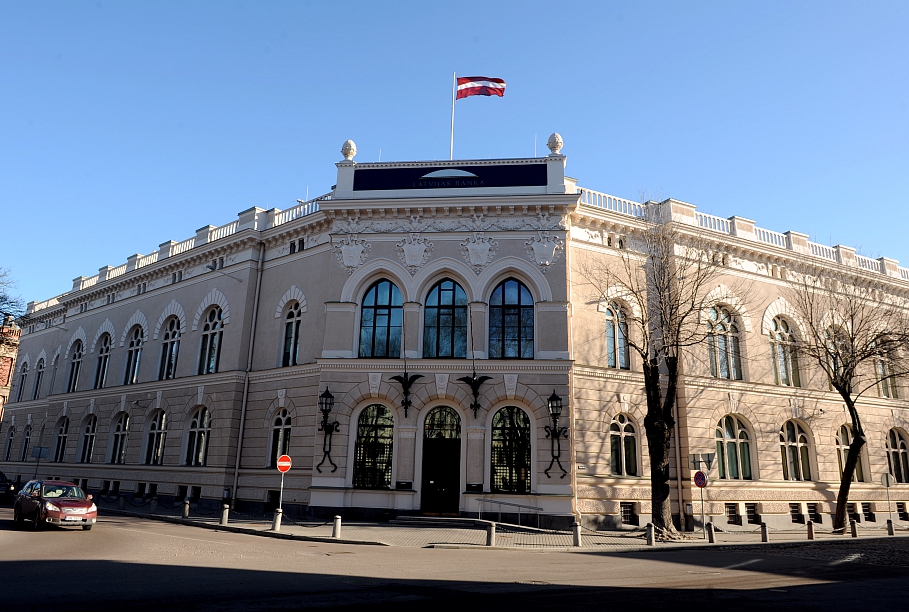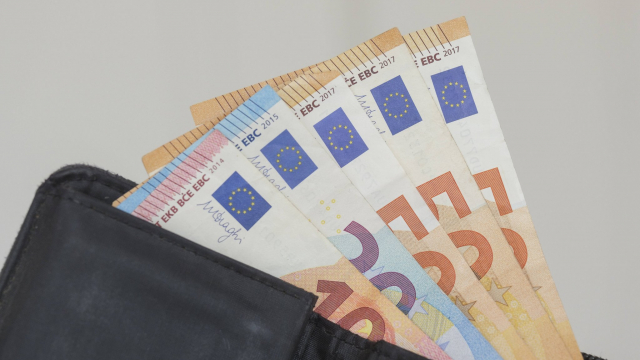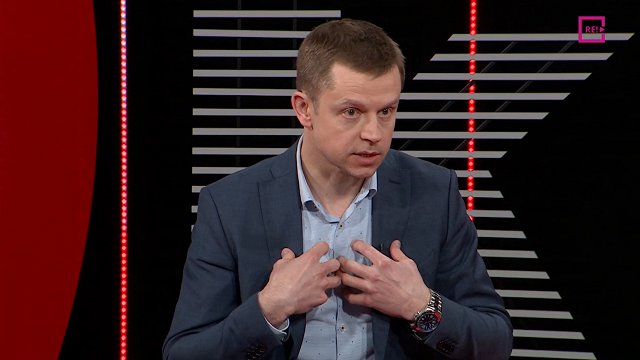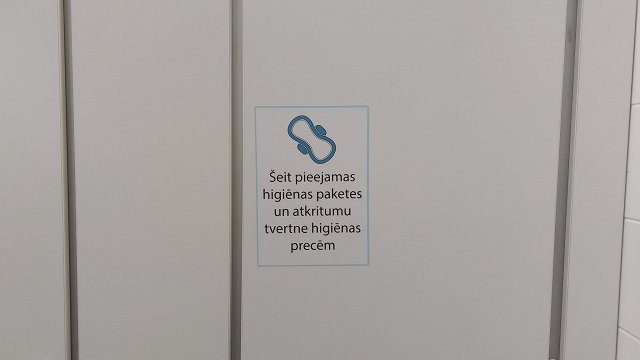"Both individuals and business customers of banks will be able to make instant payments as soon as several Latvian banks have connected to Latvijas Banka's system or any other European instant payments system that has a link with Latvijas Banka's system." LB said ina press release.
Instant payments are non-cash transfers provided 24 hours a day, 7 days a week, 365 days a year, including holidays and weekends. Customer payments are executed within a few seconds and the money received can be reused immediately.
"This is a very significant change as previously payments between European banks were only available on business days and a transfer took several hours." LB said.
"We have completed a very important first stage to enable our banks and their customers to use a really fast and state-of-the-art payment service. The national central bank has developed an infrastructure meeting the demands of the era of latest technologies. Figuratively speaking, it has built the railway, whereas the trains or services for the customers, including smartphone applications, will be provided by banks," said Harijs Ozols, the Project's Manager and Member of the Board of Latvijas Banka.
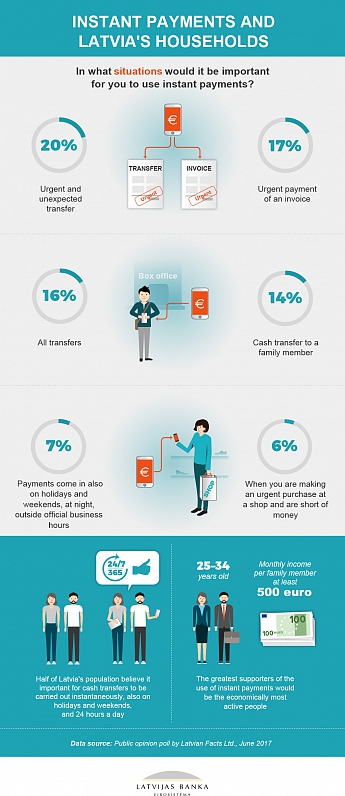
JSC Citadele banka is the first to be linked to the instant payments system of Latvijas Banka. "Transfers between accounts in Latvia as well as elsewhere in Europe in banks linked to the instant payments system will be executed within a matter of seconds, like the card payments we are making today," said Citadele board member Kaspars Cikmačs.
It is expected that a wider use of instant payments across Europe will start in November 2017 when several banks in Latvia and elsewhere in Europe will introduce this service using the instant payments system RT1 operated by EBA Clearing, a capital company established by European banks.
Two of Latvia's largest banks in terms of the volume of customer payments, Swedbank and SEB banka also intend to start offering this service following the completion of infrastructure and functionality tests.
LB has provided a Q&A about the new system for consumers, which is reproduced below.
How will instant payments be implemented? Shall I have to visit my bank?
As of 28 August 2017, Latvijas Banka provides an opportunity enabling instant payments between banks, i.e. between the customers of those banks. Bank customers will be able to make instant payments in the same way as they currently make regular payments: by submitting a payment order via their internet bank, mobile bank, mobile application, e-purse as well as by using other solutions offered by banks and their cooperation partners.
Will instant payments be available to everybody?
Yes, the objective of the project is to make instant payments available to all individuals and businesses in Latvia.
How instantaneous is "an instant payment"?
An instant payment is completed within a matter of seconds, with the payer and payee receiving an online confirmation that the money has been credited to the payee's account, and the money received can be reused immediately.
Will instant payments be available also on weekends and holidays?
Latvijas Banka will ensure instant payments 24/7, regardless of weekends or holidays. The same requirement will also apply to banks when they provide instant payments service to their customers.
Will I be able to make cross-border payments in the same manner?
Instant payments project is not merely a Latvian project. It is a euro area project. From November 2017, European banks will be able to join any of the instant payments schemes, thereby ensuring the reachability of their customers in the context of instant payments throughout Europe.
What is the limit for an instant payment?
The maximum limit per payment at the system level will be 15 thousand euros, yet banks could set lower limits on payments made by their customers.
Are instant payments available for smartphone users?
Yes, they are. It will be possible to make instant payments in a similar way as it done now, including via internet bank or mobile bank. The bulk of such payments will be made using a smartphone with an easy-to-use mobile application provided to their customers by banks. Soon it will also be possible to make a transfer quickly and conveniently by indicating the mobile phone number of the payee only, provided that the payee has added this number to the links database of account numbers and mobile phone numbers via his/her bank.
Can instant payments be used for online shopping?
In cases requiring that an invoice is paid in order to receive goods, instant payments will ensure that the trader receives the payment immediately at the moment when the goods are received, thereby making the goods or services available to the buyer sooner. Instant payments will also be an alternative for paying cash upon delivery of goods. The popularity of instant payments is largely dependent on the banks' ability to develop such solutions and the merchants' willingness to use them when accepting payments from consumers.
What are the benefits of instant payments?
For the payer, it is immediate non-cash transfers available on a pan-European scale 24 hours a day regardless of holidays and weekends. For the payee and merchants and individuals in particular, it is the possibility to receive payment quicker and re-use the money immediately. Instant payments also offer higher security to both payee and payer by reducing the need to use cash when purchasing goods or services and making payments between individuals. For the country, it is more efficient cash cycle processes and better integration into the European payments area.
What would be the most typical examples of using instant payments?
Actually, instant payments can be used in any area and they can be expected to largely replace traditional payments in the future. The most typical examples would be:
- a quick transfer to a relative or a friend who does not have enough cash with him /her and money in the account for an unplanned purchase;
- simply a quick transfer to a relative or a friend within a matter of seconds on any day and at any time of the day;
- a payment for goods or services ordered, avoiding the need to make an advance payment or use cash;
- a payment for goods or services delivered to your household while you are abroad;
- a quick transfer from a relative of yours working abroad (e.g. in Germany or Ireland), including a payment from his/her bank account in the respective country.
